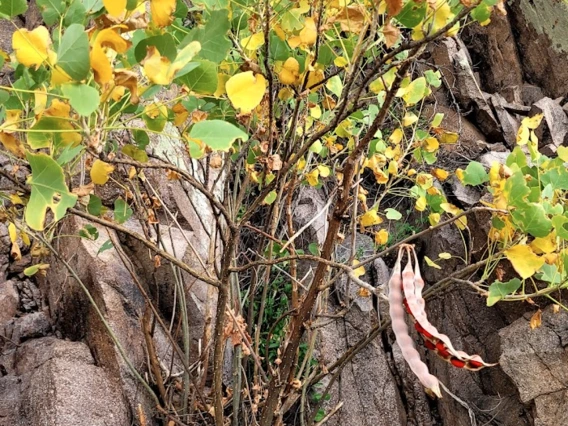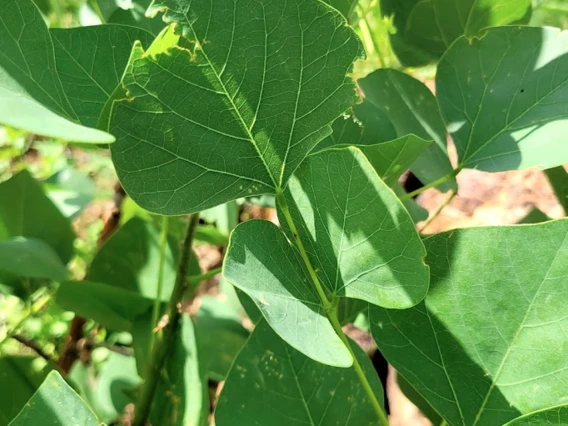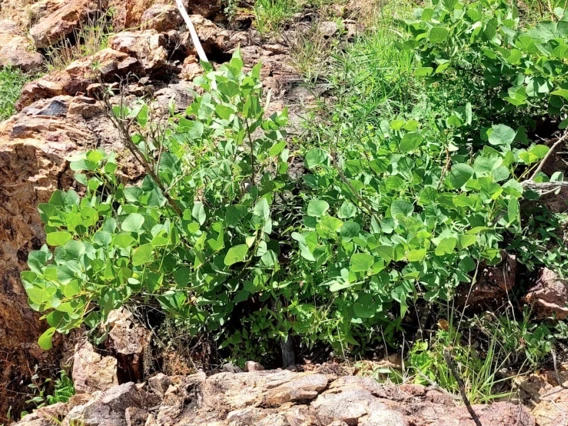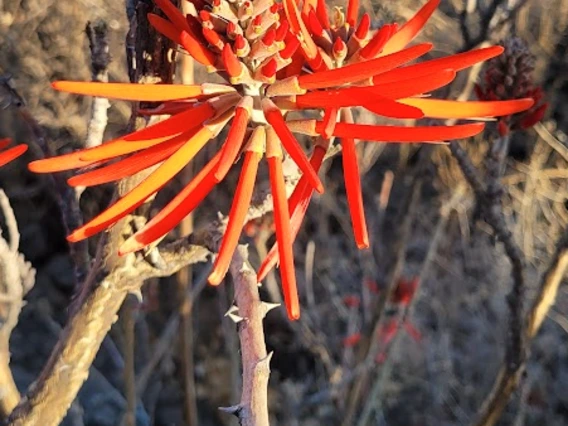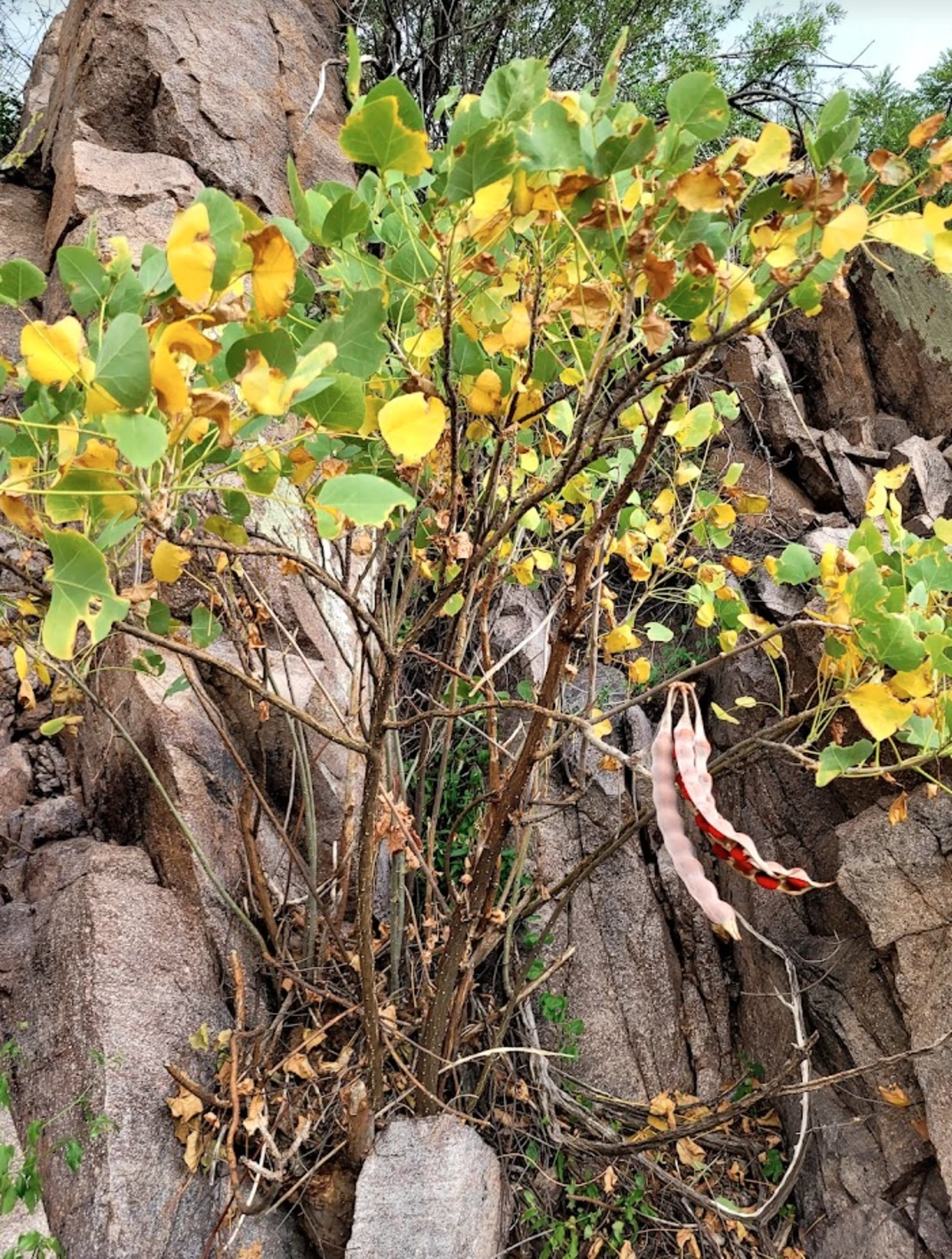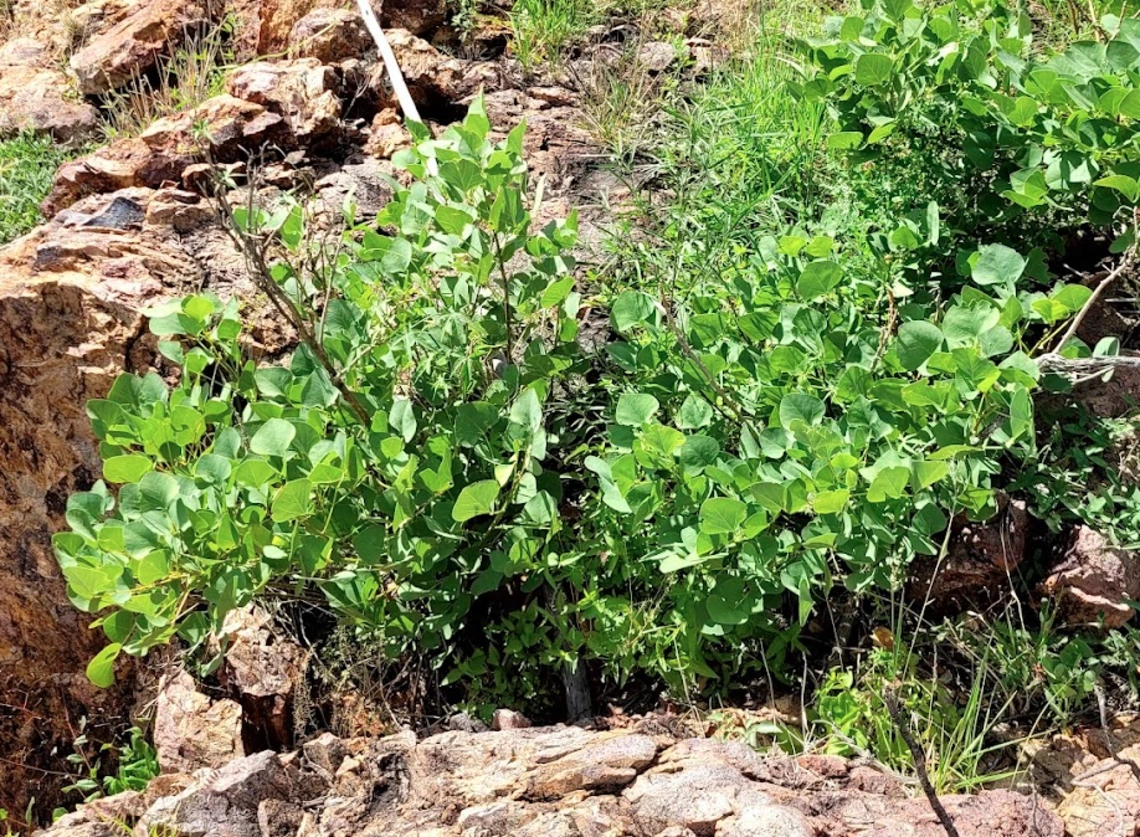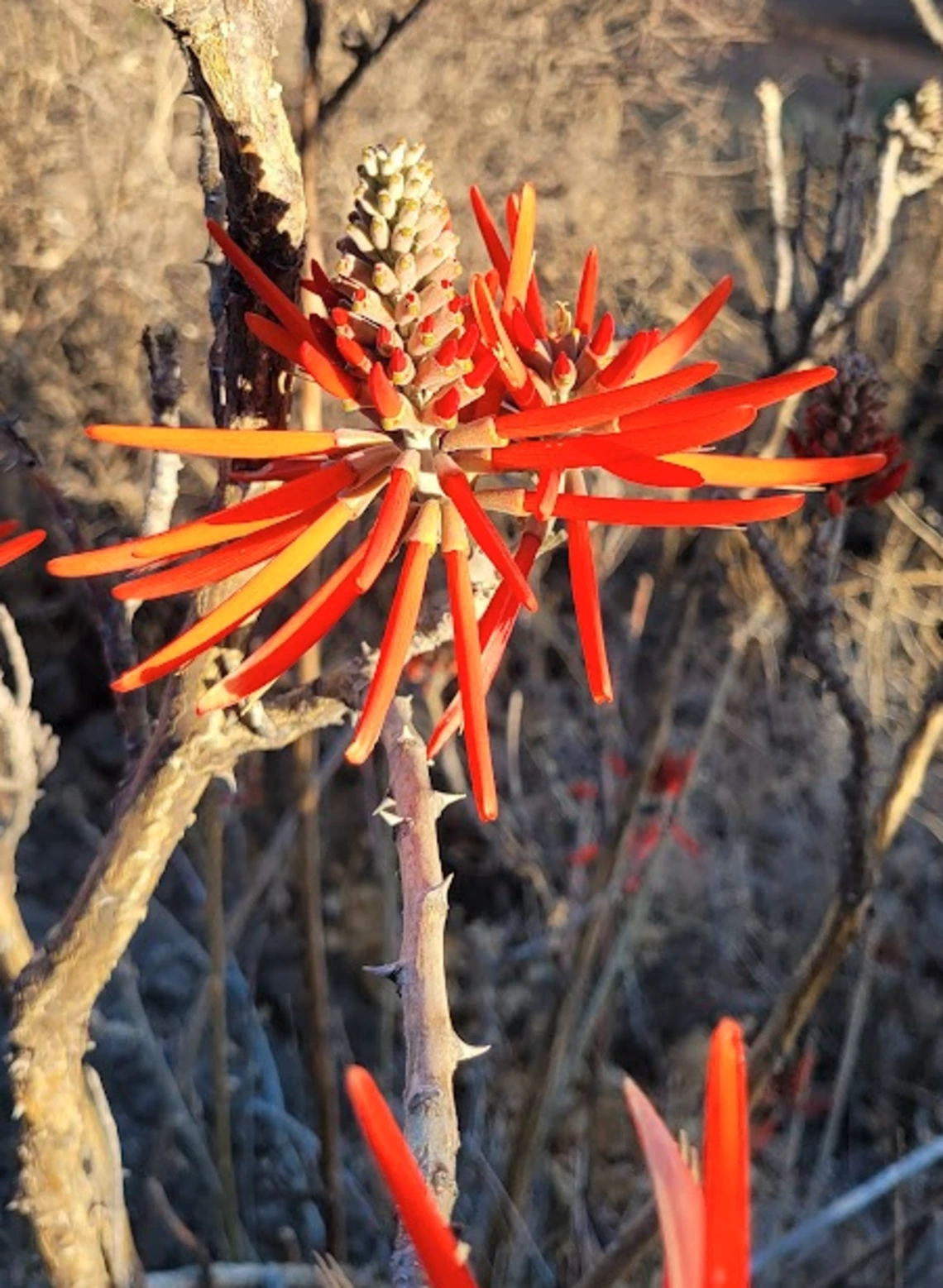Family: Fabaceae
Compound: Ery fla
Synonyms: Erythrina purpusi
Geographic Origin: southwestern US, MX
Characteristics: A deciduous shrub to tree which remains leafless for much of the year. The size of this plant varies drastically depending on winter temperatures. In SE AZ, it is typically below 3m (10ft) tall but in sheltered areas or farther south, they can get much larger. Young branches have smooth, brown to grey-brown bark and have thick, recurved spines with a seemingly random distribution. Older bark can become rough and furrowed. Leaves are pinnate, usually with 3 large, vaguely triangular leaflets. Tubular flowers are on a terminal raceme, each one long and vibrant red. In SE AZ, blooming typically occurs before the leaves emerge for the season. After pollination, large, 12-23cm (5-9in) long, ~1.3cm (~0.5in) thick pods with smooth reddish outer skin, and slight constrictions between seeds develop. When ripe, these pods split open revealing vibrant red beans which will stay attached to the pod for an extended period of time.
Natural History: Found along washes, in canyons and on rocky slopes between 915- 1675m (3,000-5,500ft). In the northern portion of their range, they are often frozen back to the ground or near to it, and so remain small, shrubby plants with large underground root structures. In areas where cold temperatures don’t hinder their growth, however, this plant is capable of growing into a large tree. The flowers are visited by hummingbirds.
Cultivation Notes: Easily grown from seed or stem cuttings. Seeds must be scarified before germination. This plant prefers partial to full sun and well-draining soils. Planting in the ground at the base of a south or west facing wall can help protect from frost damage and result in a larger plant. This species makes a great addition to gardens due to its striking flowers and vibrant green leaves. It is also a great plant for hummingbirds.
For general plant propagation information, click here
Ethnobotany: The seeds of this plant are known to be poisonous to humans.
Citations:
Mielke, Judy. Native Plants for Southwestern Landscapes. University of Texas Press, 1993.
Burrows, George E., and Ronald J. Tyrl. Toxic Plants of North America. Ames: Iowa State UP, 2001. Print.
San Marcos Growers. Retrieved June 12, 2024.
https://www.smgrowers.com/products/plants/plantdisplay.asp?plant_id=3444
SEINet Arizona – New Mexico Chapter. Retrieved June 12, 2024.


